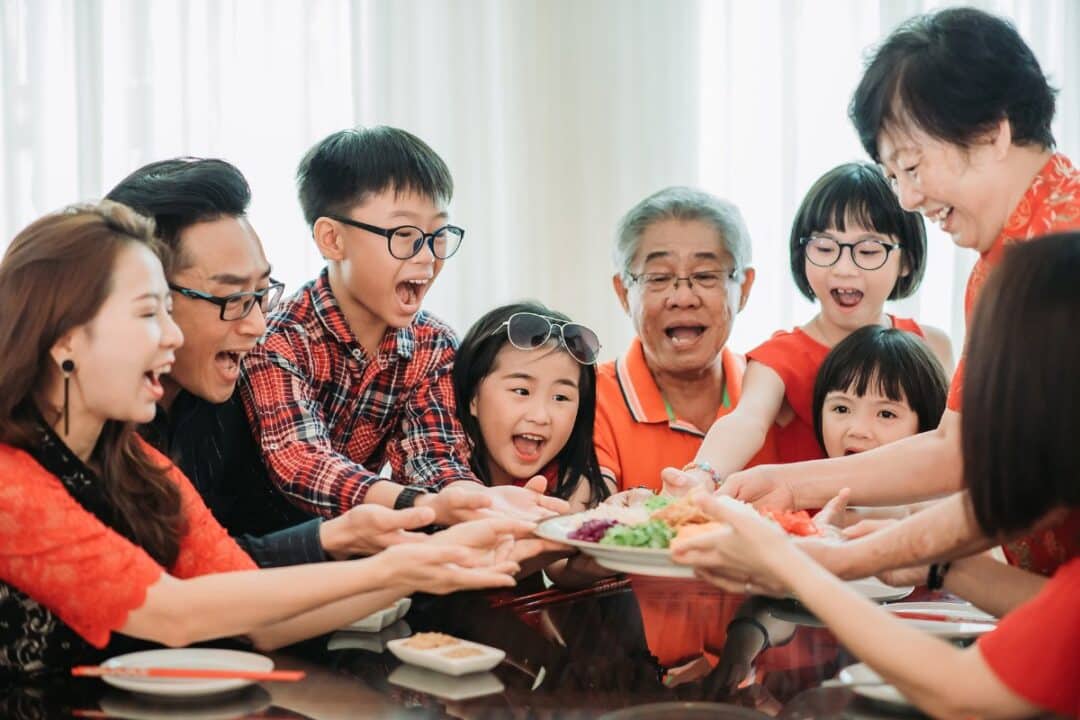Chinese New Year is all about gathering with family and friends to welcome the new year, which falls on January 29 this year! For 15 days, we will gather with our loved ones and share delicious meals. Chinese New Year food is literally a feast of sorts, like turnip cakes and CNY puddings; and these foods are eaten for auspicious reasons.
Here are the main Chinese New Year foods and snacks and their meanings.
Chinese New Year Pudding
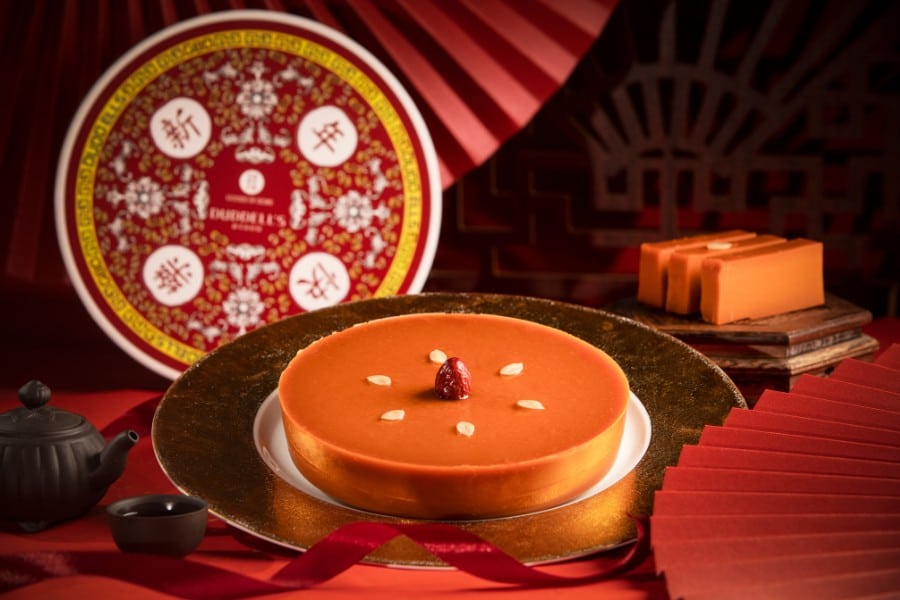
What’s sticky yet sweet and irresistible? Chinese glutinous rice cakes, or CNY pudding! Made of rice flour and brown sugar, nin gou (年糕) sounds like ‘year higher’ in Cantonese, thus its auspicious meanings of progress, growth and advancement. It’s believed that people will elevate in life and become prosperous, whether getting promoted in their careers or advancing in their studies. Today, you can find various versions of this traditionally sweet treats available in the market.
Poon Choi
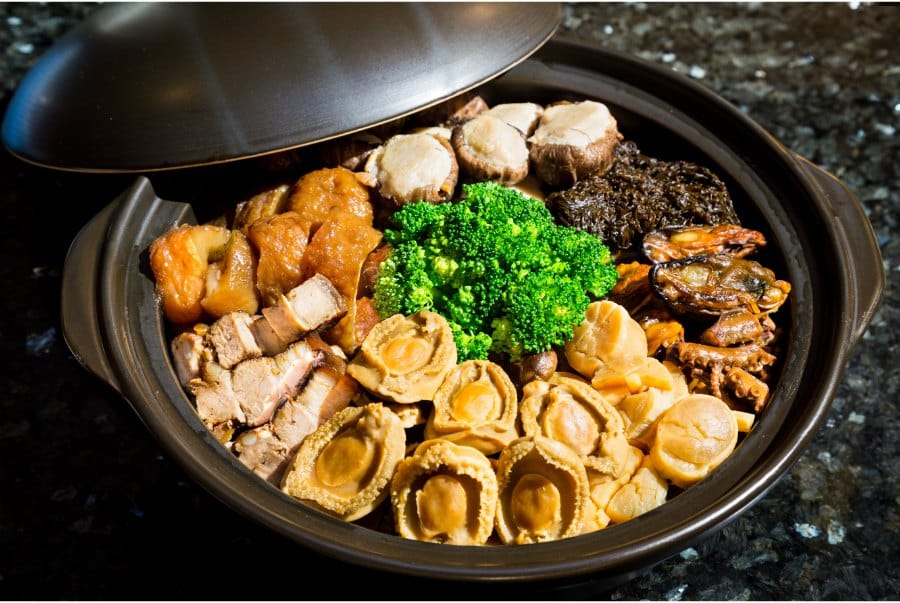
Poon choi is a Chinese New Year dish that represents unity, gathering, abundance and wealth. Similar to hotpot, this dish is meant to be shared among family and friends. The pot is generously filled to the brim with heaps of cooked ingredients, like braised pork knuckle, abalone, dried scallops, and assorted vegetables. Prepared days in advance, poon choi is rich in flavours and often served as the centrepiece of any celebratory meal.
Braised Dried Oyster with Black Moss
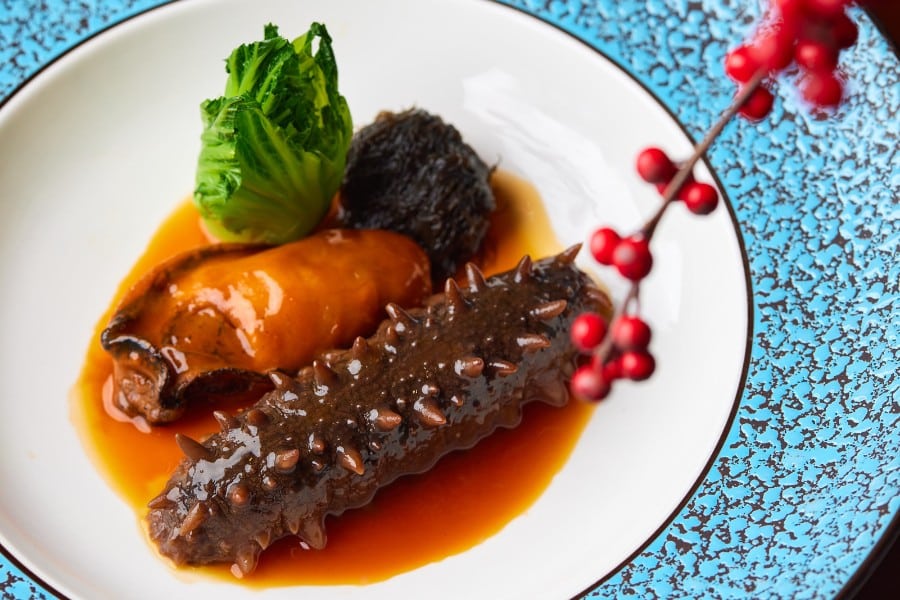
A new year blessed with prosperity and good fortune? Yes, please! The first staple dish during the festival is Braised Dried Oysters with the hair-like Black Moss (faat choi hou si). This speciality Chinese New Year cuisine is auspiciously known to bring great things and abundance (發財好市). Dried oysters sound like ‘great markets’ (hou si, 好市) when pronounced in Cantonese, while black moss, also known as hair vegetable, sounds like ‘be prosperous’ (faat choi, 發財). Both ingredients are certainly premium, so if you happen to be in the presence of this dish, remember to serve everyone and yourself a generous portion!
Chicken
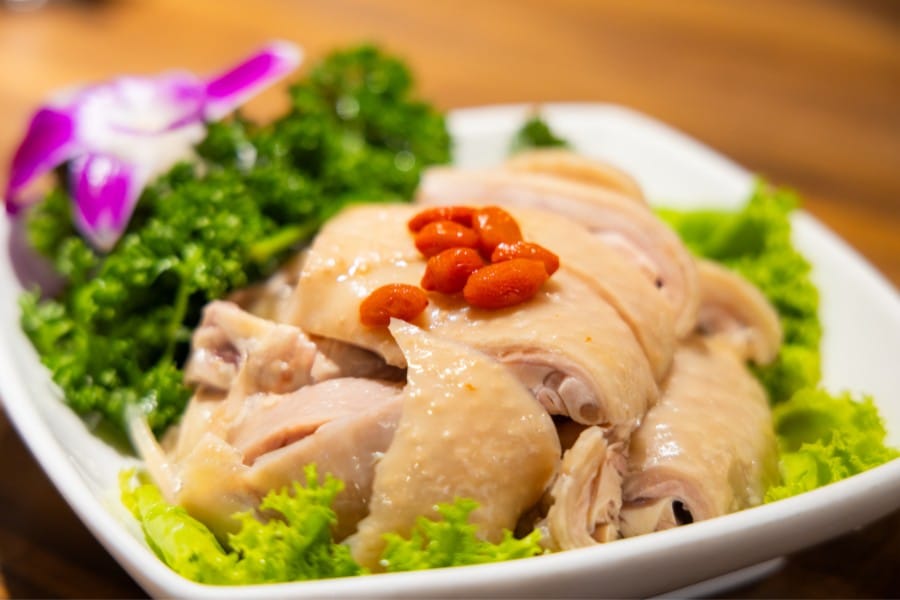
In the Canton area, chicken is a must for celebrations, and Lunar New Year is no exception. It’s not just about the taste; in Cantonese, the word for chicken (gei, 雞) sounds similar to ‘family’ (gaa, 家), indicating family harmony and marital bliss. Some also believe each part of the chicken, from wings to soup, carries a specific wish for a smooth, prosperous year. For instance, chicken wings represent “spreading your wings and flying high”, which suggests work promotions or good grades at school.
Crispy Pastry Dumpling
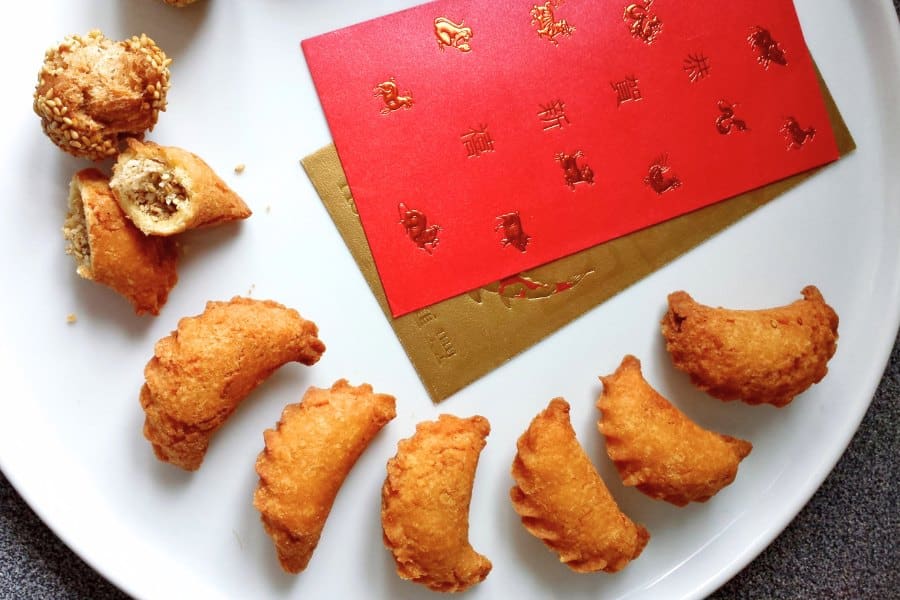
If you have to save your quota for just one deep-fried food, save it for yau gok. Yau gok are deep-fried dumplings in the Canton areas. They’re traditional CNY treats shaped into the historic Chinese currency of gold ingot, so it only makes sense that they have come to signify wealth and good fortune. The dumplings are made of glutinous rice dough and filled with a variety of condiments, from savoury items like minced pork and mushroom to sweet ones like peanuts and sesame paste. Most of them are served in miniature sizes as snacks.
Fish
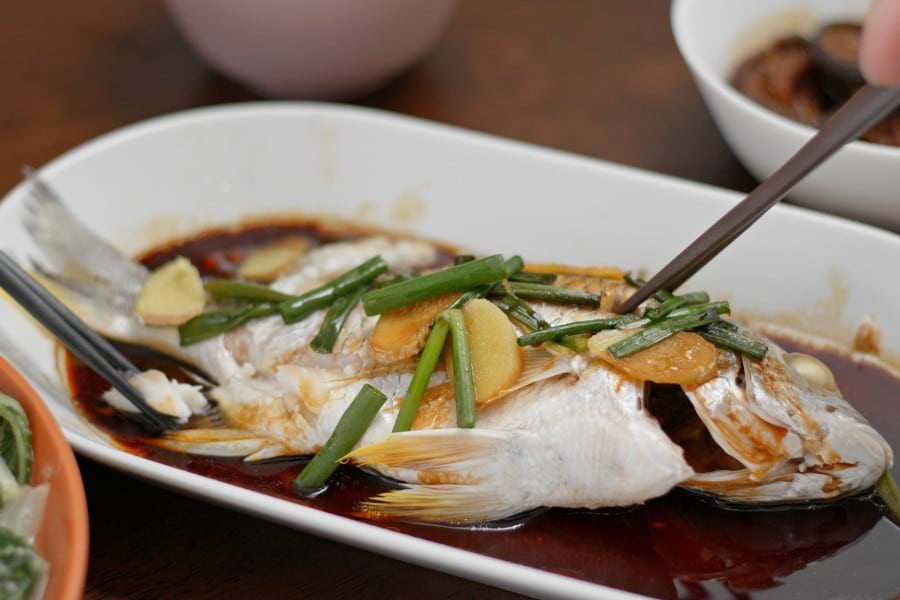
Another must-have on the Lunar New Year table is a whole fish, of any kind. In Cantonese, ‘fish’ (yu, 魚) resonates with ‘abundance’ (jyu, 餘), promising a year filled with abundance. It’s customary to serve fish on both New Year’s Eve and the first day of the Lunar New Year. Pro tips: eat just the middle portion on New Year’s Eve and save the rest for the following day – it’s all about starting and ending the year with abundance.
Lettuce
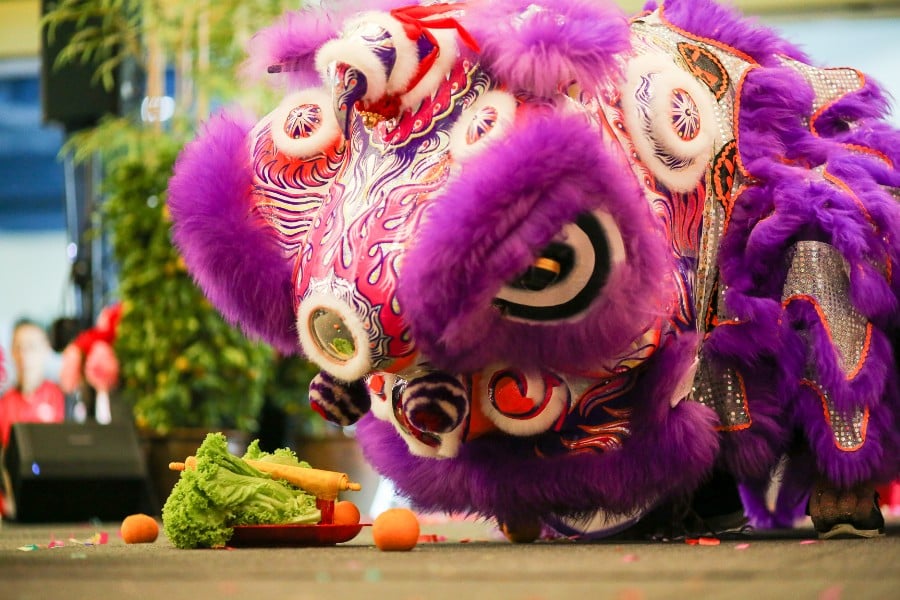
Be particular about the vegetables you eat over Chinese New Year; lettuce (saang coi, 生菜) is particularly auspicious as its pronunciation in Chinese suggests ‘creating wealth’ (sanng coi, 生財). Enjoy it however you prefer.
It’s not just the people that eats lettuce during Lunar New Year – people like to offer lettuce to the lion during lion dance performances, which then ‘eats’ and then spits it back out. This traditional practice is known as cai qing (採青) or ‘picking the greens’, representing wealth and prosperity blessings for the new year.
Prosperity Toss Salad
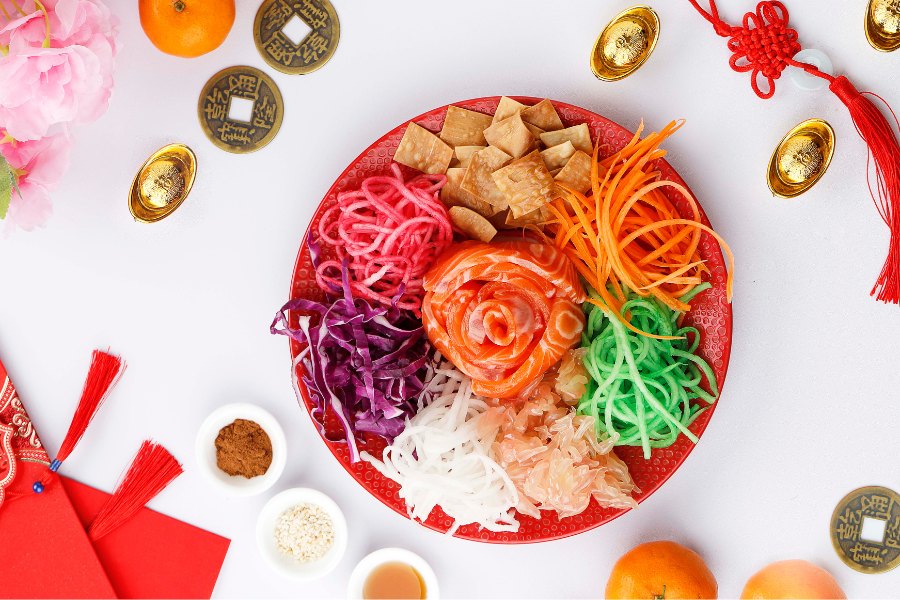
As its name suggests, Prosperity Toss Salad (lo hey, 撈起) represents abundance and prosperity. Originating from Southern Asia, the Teochew-style raw fish salad is now a Chinese New Year staple dish that features ingredients like raw salmon strips, shredded vegetables, and a mix of sauces. When served, diners shall stand and fling the ingredients high with chopsticks, chanting “lo hey, lo hey” (撈起, 撈起) – the louder, the more fortune it will bring!
Sesame Balls
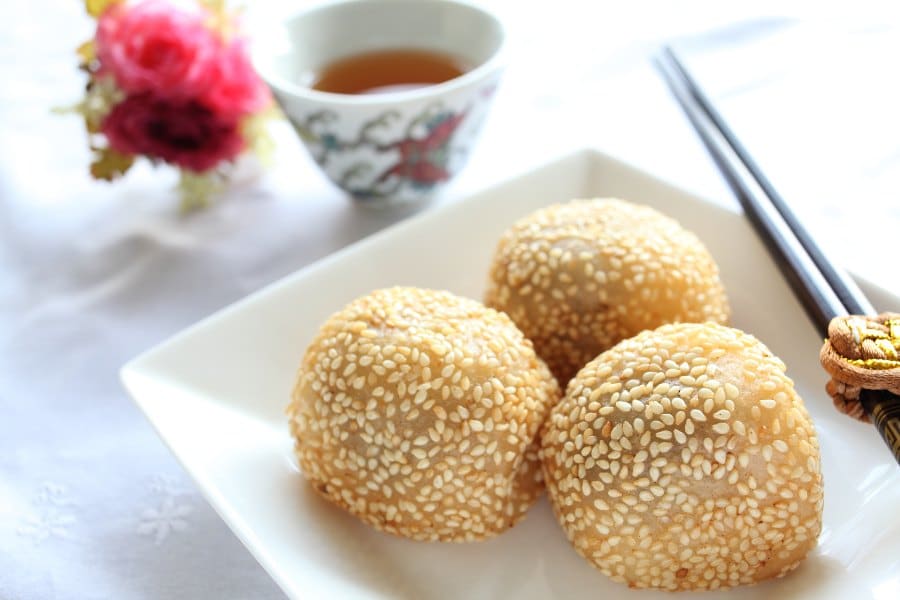
Sesame balls, or jin deui (煎堆), are crispy on the outside and soft, chewy on the inside. Made from glutinous rice flour and loaded with sweet fillings like red bean or black sesame paste, these treats are then rolled into balls, coated in sesame seeds, and fried to golden perfection. In Chinese culture, sesame is believed to bring good fortune and happiness (煎堆轆轆,金銀滿屋). Interesting enough, a bite into the fried ball creates a smiley face-like shape, perfect for bringing laughter and joy to the new year!
Sesame Smiling Cookie Balls
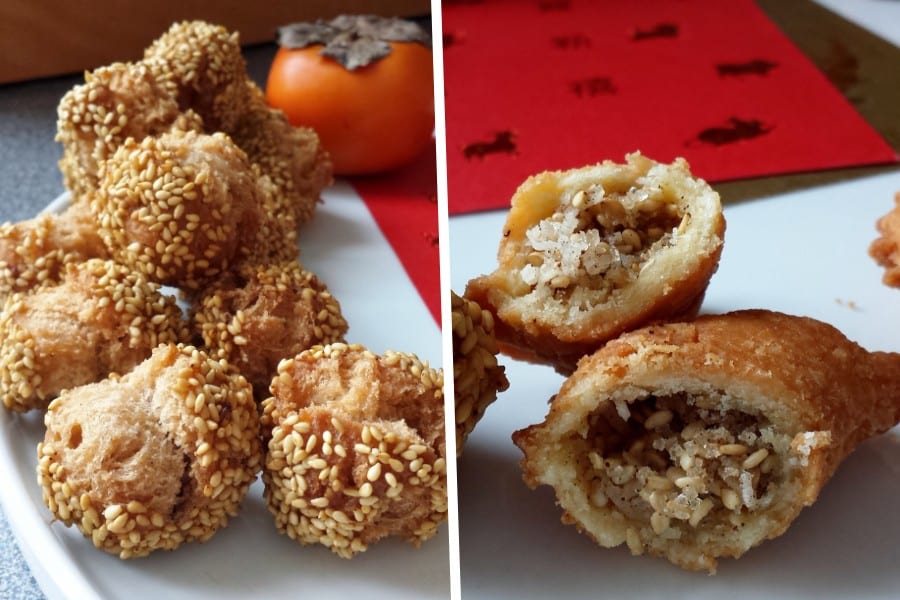
Similar to sesame balls, sesame cookies (siu hau jou, 笑口棗) are made with sesame, which represents good fortune and happiness. So-called ‘smiling cookie balls’, they get their nickname from the way the dough splits open into a Pacman-esque smile when baked. Unlike the chewy texture of sesame balls, these cookies are delightfully crisp, topped with sesame seeds for a touch of nutty goodness. Indulging in these cookies is believed to bring more positivity and radiance into your life. Sesame cookies make a great gifting option when you make your rounds visiting friends and family over the Lunar New Year.
Snack Tray
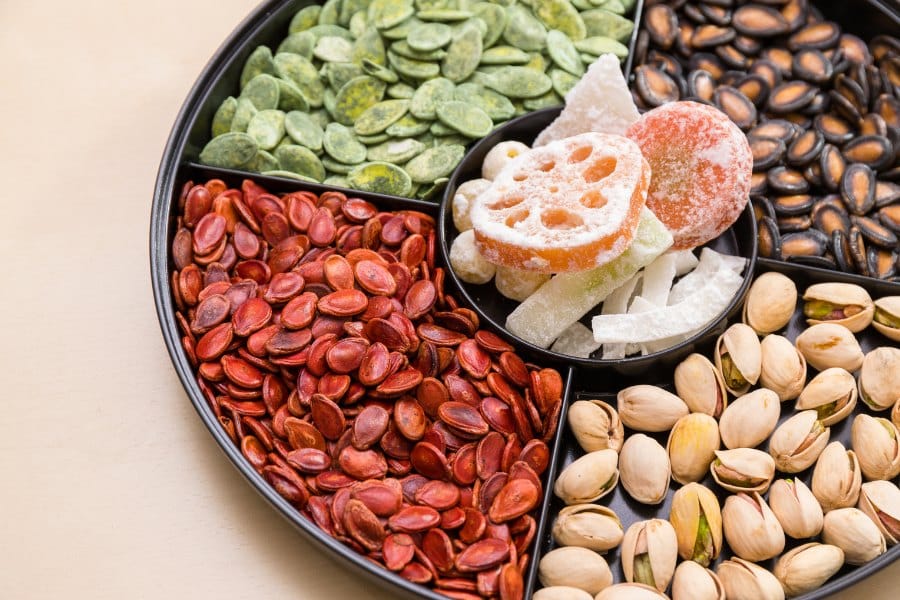
While going house to house to visit friends and family over the holiday, many would be greeted with a candy tray, or cyun hap (全盒) in Cantonese, which makes a tray of togetherness. This tray is more of ‘a box of candy’ that’s filled with many Chinese New Year treats, like sweet lotus seeds (tong lin zi, 糖蓮子), sunflower seeds, sweet lotus roots (tong lin ngau, 糖蓮藕) and sweet winter melon (tong dong gwaa, 糖冬瓜). Each of these snacks carries different meanings. For example, sunflower seeds represent having many sons and grandsons as the word ‘seed’ also means children in Chinese. Overall, the tray symbolises good luck, and everyone sharing the joy will live a happy, wholesome life.
Sweet Rice Dumplings
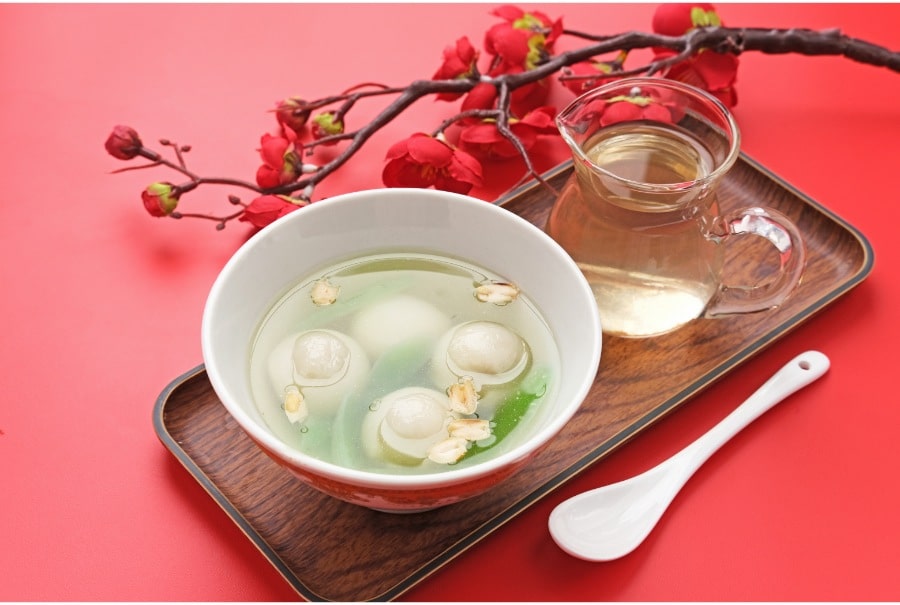
End a Chinese New Year meal with some deliciously sweet rice dumplings (tong yun, 湯圓). These mochi-like dumplings are filled with a variety of mashed condiments, like peanuts and black sesame, that auspiciously mean bringing sweetness into one’s life. Their smooth, round shapes represent harmony and wholeness and bring family and friends together. A bowl of sweet rice dumplings is typically eaten on Chinese Lantern Festival, which falls on the final day of the 15-day Chinese New Year celebration.
Turnip Cake
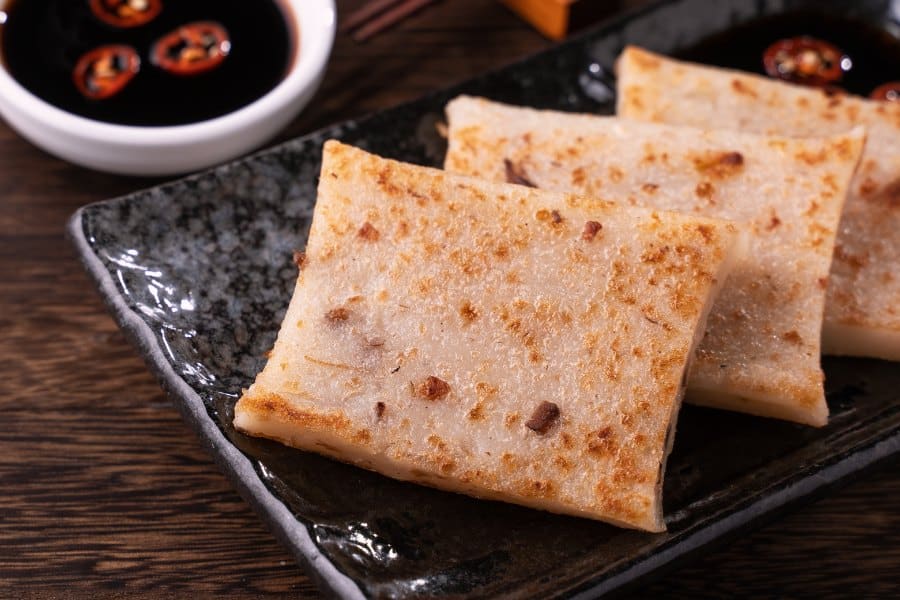
Turnip cake, a staple in Cantonese yum cha, becomes especially popular during Chinese New Year as the word for radish (choi tau, 菜頭) in Hokkien is a homophone for ‘fortune’ (coi, 財). To make this dish, shred Chinese white turnip first, then mix with water and flour. Enhance the flavour by adding your choice of ingredients like dried shrimps, dried shiitake mushrooms, and Chinese sausage. Once the mixture sets, you can pan-fry or steam it, then serve it hot with hot sauce or oyster sauce for a delightful festive treat.
Header image credits: Marcus Chung via Canva

